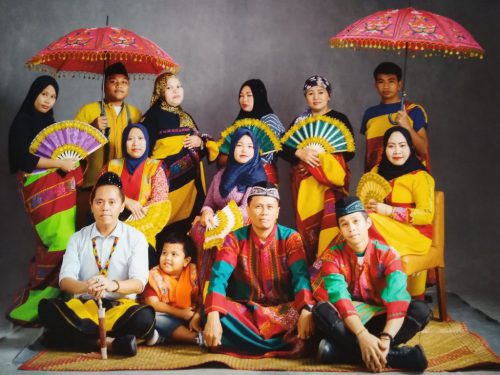
Meranao
“People of the Lake”
The Meranao inhabit Lanao del Norte and Lanao del Sur in Mindanao. The name Maranao translates to mean “People of the Lake”, after their traditional territory in the area surrounding Lake Lanao in the Bukidnon-Lanao Plateau.
According to the early written genealogical documents salsila, this term generally referred to the native people living around Lake Lanao. The lake area is the home-range of the Meranao which is located in North Central Mindanao, approximately 135 sq. miles in area and is situated 2,300 feet above sea level. They are one of the largest Islamic groups in the Philippines, with the core areas being Marawi City, Lumba-a-bayabao, and Bayang.
The Meranao are a splinter group of the Maguindanao who took up Islam; families tracing their religious origins to Sharif Kabunsuan, who introduced the religion to the region. Communities are clustered around a mosque and a torogan, a royal house belonging to the preeminent economic household in the area. Aside from exotic textiles, metalwork, and woodcraft, the torogan structure is the most significant and spectacular example of Filipino secular architecture. As a people, the Meranao are widely distributed and contribute significantly to the market and trade industry. For instance, the awang (dugout boat) used principally in Lake Lanao is both unique and extremely ornate. Textiles, on the other hand, symbolize the socio-economic rank of the wearer through the intricacies of the design motifs woven into the fabric, as well as, the richness of the colors used.
Meranao villages are composed of several families living in homes sans walls for partition. They are allowed to be members of different villages simultaneously, without fear of recrimination as outcasts due largely in part to the accepted bilateral relationships. As transients, they’re found in other parts of the Archipelago. Primary subsistence consists of dry rice cultivation in hilly areas; intensive wet rice in flood plains; and some corn, sweet potato, coffee, cassava and peanuts. To supplement their agricultural harvests, they also incorporate fishing.
